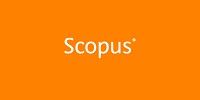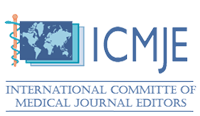BIG DATA APPLICATION IN THE NEYMAN-PEARSON REGRESSION AND DEEP BERNOULLI AND BOLTZMANN FOR IOT BASED SOIL QUALITY PREDICTION
Аннотация
Purpose. The aim of the work is to enhance the soil quality prediction accuracy and time by using feature selection and classification-based model.
Background. Soil quality analysis was handled based on the farmer’s first-hand data mining competence and with the world population expected to increase exponentially (i.e., big data), erratic changes in climate have started influencing soil capitulates incorrectly. Big data is employed used to examine the large amount of dataset for soil quality analysis. It is helps to address a lot of new and significant farming decisions and issue. Soil quality analysis depends on fertility of the soil. By soil quality analysis accuracy prediction is very crucial for practical utilization of resources. But, the existing data mining techniques failed to select the correct crop based on the soil and environmental features.
Material and methods. The study presents the data mining techniques based on smart and efficient soil quality prediction for agriculture development. In our work, first, linear regression and the Neyman-Pearson correlation-based feature selection model is employed to obtain the computationally efficient and relevant features. Next, an enhanced deep learning model called deep Bernoulli and Boltzmann IoT-based soil quality prediction is designed to classify the complex soil features with better sensitivity and specificity.
Results. Experimental results obtained confirmed the performance and reliability of the proposed method. The result evaluations are carried out on the basis of the prediction accuracy, prediction time, sensitivity and specificity.
Conclusion. The result shows that the NPR-DBB method achieves better results than the state-of-the-art methods.
Скачивания
Литература
Helfera G.A., Barbosa J.L.V., Santos R. et al. A computational model for soil fertility prediction in ubiquitous agriculture. Computers and Electronics in Agriculture, Elsevier, 2020, vol. 175, pp. 105602. https://doi.org/10.1016/j.compag.2020.105602
Suchithra M.S., Pai M. L. Improving the prediction accuracy of soil nutrient classification by optimizing extreme learning machine parameters. Information Processing in Agriculture, Elsevier, 2019, vol. 7, no. 1, pp. 72-82. https://doi.org/10.1016/j.inpa.2019.05.003
Mohamed E. S., Belal AA., Abd-Elmabod S.K. et al. Smart farming for improving agricultural management. The Egyptian Journal of Remote Sensing and Space Sciences, Elsevier, 2021, vol. 24, no. 3, pp. 971-981. https://doi.org/10.1016/j.ejrs.2021.08.007
Sawalha S., Al-Naymat G. Towards an efficient big data management schema for IoT. Journal of King Saud University – Computer and Information Sciences, Elsevier, 2021. https://doi.org/10.1016/j.jksuci.2021.09.013
Andrianto H., Suhardi, Faizal A. et al. Performance evaluation of IoT-based service system for monitoring nutritional deficiencies in plants. Information Processing in Agriculture, Elsevier, 2021. https://doi.org/10.1016/j.inpa.2021.10.001
Akhtera F., Siddiqueia H.R., Alahib E.E., Mukhopadhyay S.C. Design and development of an IoT-enabled portable phosphatedetection system in water for smart agriculture. Sensors and Actuators A: Physical, Elsevier, 2021, vol. 330, pp. 1-11. https://doi.org/10.1016/j.sna.2021.112861
Benyezza H., Bouhedda M., Rebouh S. Zoning irrigation smart system based on fuzzy control technology and IoT for water and energy saving. Journal of Cleaner Production, Elsevier, 2021, vol. 132, pp. 1-15. https://doi.org/10.1016/j.jclepro.2021.127001
Kaur A., Sood S.K. Energy efficient cloud-assisted IoT-enabled architectural paradigm for drought prediction. Sustainable Computing: Informatics and Systems, Elsevier, 2020, vol. 30, pp. 1-15. https://doi.org/10.1016/j.suscom.2020.100496
Rejeb A., Rejeb K., Zailani S. Big data for sustainable agri-food supply chains: a review and future research perspectives. Journal of Data, Information and Management, Springer, 2021, vol. 3, no. 3, pp. 167–182. https://doi.org/10.1007/s42488-021-00045-3
Santhi M.V.B.T., Raju S. H., Krishna P.S.R. et al. Full smart sprinklers: Monitoring of sprinkler watering using IoT. Materials Today: Proceedings, Elsevier, 2020, vol. 10, no. 339, pp. 1-6. https://doi.org/10.1016/j.matpr.2020.12.399
Torky M., Hassanein A.E. Integrating blockchain and the internet of things in precision agriculture: Analysis, opportunities, and challenges. Computers and Electronics in Agriculture, Elsevier, 2020, vol. 178, pp. 1-23. https://doi.org/10.1016/j.compag.2020.105476
Geng X., Zhu C., Zhang J., Xiong Z. Prediction of Soil Fertility Change Trend Using a Stochastic Petri Net. Journal of Signal Processing Systems, Springer, 2020, vol. 93, no. 3, pp. 1-13. https://doi.org/10.1007/s11265-020-01594-3
Mupangwa W., Chipindu L., Nyagumbo I. et al. Evaluating machine learning algorithms for predicting maize yield under conservation agriculture in Eastern and Southern Africa. Springer Nature, 2020, vol. 2, no. 952, pp. 1-14. https://doi.org/10.1007/s42452-020-2711-6
Wu C., Chen Y., Hong X. et al. Evaluating soil nutrients of Dacrydium pectinatum in China using machine learning techniques. Forest Ecosystems, Springer, 2020, vol. 7, no. 30, pp. 1-14. https://doi.org/10.1186/s40663-020-00232-5
Inazumi S., Intui S., Jotisankasa A. et al. Artificial intelligence system for supporting soil classification. Results in Engineering, Elsevier, 2020, vol. 8, pp. 1-9. https://doi.org/10.1016/j.rineng.2020.100188
Xu Z., Zhao X., Guo X. Deep Learning Application for Predicting Soil Organic Matter Content by VIS-NIR Spectroscopy. Computational Intelligence and Neuroscience, Hindawi, 2019, vol. 2019, pp. 1-11. https://doi.org/10.1155/2019/3563761
Li J., Gao X., Guo B., Wu M. Production plan for perishable agricultural products with two types of harvesting. Information Processing in Agriculture, Elsevier, 2019, vol. 7, no. 1, pp. 83-92. https://doi.org/10.1016/j.inpa.2019.05.001
Padarian J., Minasny B., McBratney A.B. Machine learning and soil sciences: a review aided by machine learning tools. Soil, European Geosciences Union, 2020, vol. 6, no. 1, pp. 35-52. https://doi.org/10.5194/soil-6-35-2020
Santana E. J., Santos F. R., Mastelini S. M. et al. Improved prediction of soil properties with Multi-target Stacked Generalisation on EDXRF spectra. Elsevier, 2019, vol. 209, pp. 1-12. https://doi.org/10.1016/j.chemolab.2020.104231
Elavarasan D., Vincent P. M. D. Crop Yield Prediction Using Deep Reinforcement Learning Model for Sustainable Agrarian Applications. IEEE Access, 2020, vol. 8, pp. 86886-86901. https://doi.org/10.1109/ACCESS.2020.2992480
Anteh J.D., Timofeeva O.A., Mostyakova A.A. Assessment of Mineral Nutrient Impact on Metabolites Accumulation In Kale (Brassica Oleracea Var. Sabellica). Siberian Journal of Life Sciences and Agriculture, 2021, vol. 13, no. 3, pp. 208-224. https://doi.org/10.12731/2658-6649-2021-13-3-208-224
Suchkov D.K. Environmental and Economic Efficiency Protective Afforestation in the Arid Zoned. Siberian Journal of Life Sciences and Agriculture, 2021, vol. 13, no. 3, pp. 119-138. https://doi.org/10.12731/2658-6649-2021-13-3-119-138
Bondarenko V.L., Senova E.A., Gurina I.V., Aliferov A.V. Fundamental of technology convergence when water resource in agriculture production. Siberian Journal of Life Sciences and Agriculture, 2017, vol. 9, no. 1, pp. 100-114. https://doi.org/10.12731/wsd-2017-1-100-114
Wazihub Soil Moisture Prediction Challenge. URL: https://zindi.africa/competitions/wazihub-soil-moisture-prediction-challenge/data (accessed 20.12.2021)
Просмотров аннотации: 290 Загрузок PDF: 228
Copyright (c) 2022 G. Balaji, P. Vijayakumar

Это произведение доступно по лицензии Creative Commons «Attribution-NonCommercial-NoDerivatives» («Атрибуция — Некоммерческое использование — Без производных произведений») 4.0 Всемирная.





















































